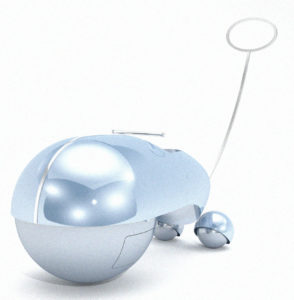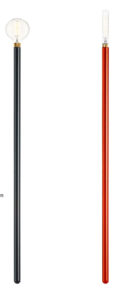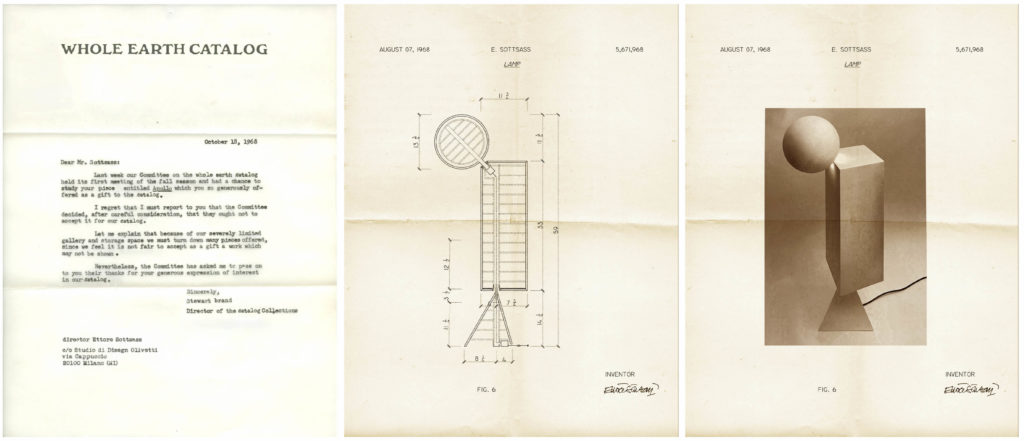“Often research in design involves going to Google Images and looking at a page of out-of-context thumbnails,” says Jeffrey Schnapp, faculty director at Harvard Graduate School of Design’s MetaLAB, which explores the ties between design, engineering, society and culture. “I believe a deep and sustained engagement with different moments in the history of design is a force for unleashing the imagination and a valuable and humbling experience that gives a more nuanced understanding of the different factors that come together in a successful design.”

by Corradino D’Ascanio
The Vespa Beluga was a baby stroller first developed by Piaggio for an alternate ending to the 1953 film Roman Holiday. Though dropped from the film’s final cut, the Beluga underwent successful distribution as a kiddie stroller-scooter during the baby boom of the 1950s and is now a collector’s item. Alongside its parent vehicle, the Vespa, the Beluga became the icon of an active and rewarding family life. By Jiho Sejung Song
The first course Schnapp taught at Harvard GSD in 2009 was designed to put this philosophy into action, encouraging students to take an in-depth look at various objects in the canon of 20th-century Italian industrial design. For an associated exhibition, students created fictional, but plausible, objects of their own, each with a history and story spun around it.
A decade later, another exhibition–Thing Tank: 18 Design Fictions, opening May 28, 2019–takes a similar approach, this time displaying 18 student projects that engage in a dialogue with some of the defining works of 20th-century Italian design, from Carlo Bugatti’s 1902 Cobra Chair to the Olivetti calculators of the 1980s. “The idea is to get students to think about how design practice is deeply intertwined with storytelling and social narratives.”

The 10-inch pen-sized personal lighting device by Achille Castiglioni can be switched on and off by twisting the LED light bulb at its top. By Xiaotang Tang & Jing Chang
Among the exhibited works is a pair of shoes for the early 1980s, inspired by the work of Ettore Sottsass and the Memphis movement, and a fan made out of aircraft aluminum designed for the 1930s, a time when there was much excitement about electric table fans. Each artifact in the exhibition was analyzed with respect to its materials, properties, the broader family of objects to which it belongs, and the socio-historical context in which it was produced. The resultant gallery of fictional facsimiles includes period advertising campaigns, patent drawings, and other forms of “historical” documentation.
One of the central lessons for the students was the fact that many of the objects we think of as iconic were actually failures. “It was often a surprise that designs that eventually entered the collection of the Museum of Modern Art or the Victoria & Albert Museum were not necessarily commercially successful.” He points the famed Bialetti Moka Express coffee maker, which was made by a metallurgist with limited design skills, as an example. “For the first 15 to 20 years it sold an extremely small number. Then his son came along and turned it into the coffee maker we know today.”
This sense of history has informed Schnapp’s own design work with the Piaggio automotive group: Gita, which goes into production this year, is a robotic vehicle conceived to support pedestrianism by carrying heavy objects that would normally lead people–particularly older individuals and those with mobility constraints–to use a car. “We’re trying to create what we see as a missing link in the mobility models that have characterized the world we live in, where something like 75% of the trips that people take in automobiles are at pedestrian distances.”

An established figure thanks to his work for Olivetti, Ettore Sottsass became increasingly interested in engagements with the American counterculture during the 1960s. Stewart Brand’s Whole Earth Catalog particularly captured his imagination and, in late 1968, he submitted a lighting design (later patented) for inclusion in the second issue. With its disjointed geometries, glossy surfaces, and non-functionalist aesthetic, this proto-Memphis design was rejected by Brand. By Alex Yueyan Li & Alex Fernandez Grande
The project seems entirely driven by contemporary concerns, but it builds on research in Piaggio’s archives into vehicles like the Vespa. “We spent a lot of time thinking about how the Gita fits into the history of light mobility vehicles and the close intertwining of design and engineering.” Over the next few years, a whole family of related vehicles will emerge around this design, creating a new typology–and, in doing so, forming a design history of its own.
Visit the Thing Tank exhibition page for more information and a full list of student projects, or keep reading about the innovations underway at Piaggio Fast Forward.